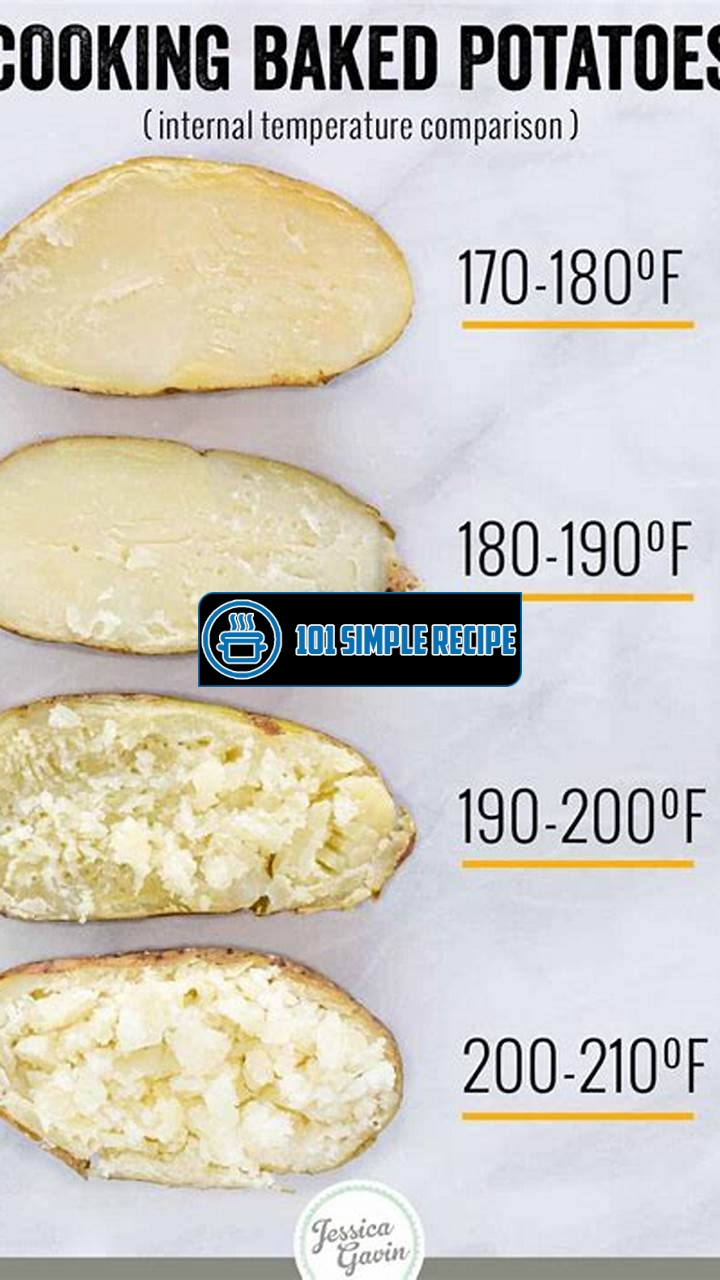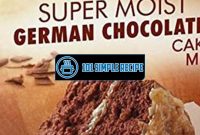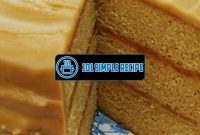If you’re tired of ending up with undercooked or overcooked potatoes, you’ve come to the right place! In this article, we will guide you through the process of baking potatoes to perfection every single time. Whether you prefer a crispy exterior or a fluffy interior, we’ve got you covered. With our step-by-step instructions and helpful tips, you’ll soon be able to impress your family and friends with perfectly baked potatoes that are just right. So grab your apron, preheat your oven, and let’s get started on this culinary adventure!

The Science behind Baking Potatoes
When it comes to baking potatoes to perfection, there is a science behind achieving that crispy exterior and fluffy interior that everyone desires. Several factors affect the ideal temperature for baking potatoes, and understanding these factors is crucial to achieving the desired results. So, let’s dive into the science behind baking potatoes and discover how to ensure the perfect outcome every time.
Understanding the Role of Starch
Starch plays a significant role in the texture of a baked potato. It is a complex carbohydrate that is present in most plants, including potatoes. The starch content in potatoes can vary depending on the type of potato and how it is stored. Potatoes with a higher starch content, such as russet potatoes, are ideal for baking as they yield a light and fluffy interior.
When a potato is exposed to heat during the baking process, the starch granules inside the potato begin to absorb moisture. As they absorb this moisture, the granules swell and gelatinize, resulting in a soft and tender interior. However, if the temperature is too low, the starches won’t gelatinize properly, resulting in a gummy texture. On the other hand, if the temperature is too high, the potato’s exterior may get overcooked before the interior becomes fluffy.
Key Point: Proper gelatinization of starch is essential for achieving the desired fluffy texture of a baked potato.
Moisture Content and Cooking Temperature
The moisture content of a potato also plays a crucial role in the baking process. Potatoes with a high moisture content may take longer to cook and can end up having a dense texture. On the other hand, potatoes with a low moisture content may become dry and mealy when baked.
It is important to select potatoes that are neither too wet nor too dry for baking. A good indicator of moisture content is the potato’s skin. Potatoes with dry and flaky skin tend to have lower moisture content, which is ideal for baking. Conversely, potatoes with shiny and waxy skin have a higher moisture content and are better suited for boiling or steaming.
Key Point: Choosing potatoes with the right moisture content is crucial for achieving the perfect texture when baking.
Choosing the Right Potato Variety
Not all potatoes are created equal when it comes to baking. Different potato varieties have different textures, flavors, and cooking properties. Some potatoes are better suited for baking, while others are more suitable for boiling or frying.
Russet potatoes, also known as Idaho potatoes, are widely regarded as the best choice for baking. They have a high starch content and a dry, fluffy texture when cooked. Yukon Gold potatoes are another great option for baking. They have a smooth and creamy texture and lend themselves well to baking.
On the other hand, waxy potatoes, such as red potatoes or fingerling potatoes, have a lower starch content and a firmer texture. While they can be baked, they are more commonly used for boiling or roasting.
Key Point: Choosing the right potato variety, such as russet or Yukon Gold, is essential for achieving the perfect baked potato.
In conclusion, achieving the perfect baked potato involves understanding the science behind the process. Factors such as starch content, moisture content, and potato variety all contribute to the desired texture. By considering these factors and baking at the proper temperature, you can enjoy a baked potato with a crispy exterior and a fluffy interior every time.
If you’re in the mood for something sweet after your baked potatoes, why not try making a cookie in a mug? It’s a quick and easy dessert that you can enjoy in minutes.
The Benefits of Baking Potatoes
Baking potatoes is not only a delicious way to enjoy this versatile vegetable, but it also offers numerous benefits compared to other cooking methods. From its health advantages to its versatility in the kitchen, baking potatoes is a culinary choice that you won’t regret.
Nutritional Value of Baked Potatoes
Baked potatoes are not just a tasty treat; they are also loaded with essential nutrients that are beneficial for your overall health. When you bake potatoes, their natural starches break down, resulting in a soft, fluffy texture that is easy to digest. This makes them a great choice for individuals with sensitive stomachs or digestive issues.
- Fiber: Baked potatoes are an excellent source of dietary fiber, promoting healthy digestion and preventing constipation. The skin of the potato, which becomes deliciously crispy when baked, is packed with fiber that aids in maintaining bowel regularity.
- Vitamins and Minerals: Potatoes are a rich source of various vitamins and minerals, including vitamin C, vitamin B6, potassium, and manganese. Vitamin C is an essential antioxidant that boosts your immune system, while vitamin B6 supports brain development and function. Potassium helps maintain healthy blood pressure levels, and manganese supports proper bone health.
- Antioxidants: Baked potatoes contain phytonutrients, such as flavonoids and carotenoids, which act as antioxidants in the body. These antioxidants help protect cells from damage caused by harmful free radicals and reduce the risk of chronic diseases, such as heart disease and certain types of cancer.
Baking Potatoes vs. Frying or Boiling
When it comes to cooking potatoes, baking them is a healthier alternative to frying or boiling. Here’s why:
- Lower Calorie Content: Frying potatoes often requires the use of oil or butter, adding extra calories and unhealthy fats to your meal. Baking potatoes, on the other hand, allows them to cook in their natural juices, eliminating the need for added fats.
- Retains Nutrients: Boiling potatoes can cause them to lose some of their nutrients as they leach into the water. Baking potatoes minimizes nutrient loss and keeps the majority of their vitamins and minerals intact.
- Less Grease and Fat: While frying potatoes can result in a crispy and flavorful outer layer, it also means a higher fat content. Baking potatoes produces a deliciously crisp skin without the excessive grease, making them a healthier choice.
So next time you’re contemplating how to cook your potatoes, consider the health benefits and lower calorie count of baking instead of frying or boiling!
Creative Ways to Enjoy Baked Potatoes
Baked potatoes are a blank canvas that can be enjoyed in countless creative and delicious ways. Here are some ideas to inspire your culinary adventures:
- Loaded Baked Potatoes: Top your baked potato with savory toppings like sour cream, crispy bacon, cheddar cheese, and chives for a mouthwatering treat.
- Potato Skins: Scoop out the potato flesh, leaving a thin layer inside the skin. Fill the potato skins with your favorite fillings such as melted cheese, salsa, or guacamole.
- Twice-Baked Potatoes: After baking a potato, slice it in half and scoop out the flesh. Mix the potato with ingredients like cream cheese, garlic, and herbs, then stuff the mixture back into the skins and bake until golden and bubbly.
- Mashed Potatoes: Baked potatoes can be easily mashed with butter, milk, and seasonings. Serve them as a side dish or use them as a base for shepherd’s pie or potato pancakes.
The possibilities are endless when it comes to enjoying baked potatoes. Get creative in the kitchen and discover your favorite way to savor this versatile vegetable!
If you want to learn how to bake potatoes at the right temperature, check out this recipe for weight loss. It’s a delicious and healthy way to enjoy baked potatoes.
Preparing Potatoes for Baking
When it comes to baking potatoes to perfection, the key lies in the preparation process. Properly preparing your potatoes ensures that they come out of the oven with a delightful, fluffy interior and a crispy, golden-brown skin. In this section, we will guide you through the crucial steps to ensure your potatoes are perfectly prepared for baking. From washing and drying to seasoning and pricking, we’ve got you covered.
Washing and Drying the Potatoes
The first step in preparing your potatoes for baking is to give them a thorough wash. This removes any dirt or debris that might be clinging to the skin. Use cold water and gently scrub the potatoes with a brush to ensure they are clean. This step is essential to prevent any unwanted grittiness when you take a bite of your baked potato.
Once you have washed the potatoes, make sure to thoroughly dry them. Excess moisture can prevent the skin from crisping up during the baking process. Use a clean towel to pat the potatoes dry or let them air dry for a few minutes. Ensuring that your potatoes are dry will contribute to that perfect crunch when you bite into them. ☀️
Seasoning Options for Enhanced Flavor
Now that your potatoes are clean and dry, it’s time to enhance their flavor with some delicious seasonings. You can go for classic options like salt and pepper, or get creative and experiment with different herbs and spices. The choice is yours! Adding the right seasonings not only adds depth and complexity to the taste but also complements any toppings you might add later on. ️
Some popular seasoning options for baked potatoes include garlic powder, paprika, onion powder, and dried herbs like thyme or rosemary. Sprinkle the seasonings generously over the potatoes, making sure to coat them evenly. This will ensure that each bite is bursting with flavor. ️
Why Pricking Potatoes is Important
Now, let’s talk about the importance of pricking the potatoes before baking them. Pricking the potatoes with a fork or knife allows steam to escape during the baking process. If you skip this step, the steam builds up within the potato, resulting in an explosion! Pricking the potatoes ensures they cook evenly, with the heat penetrating all the way to the center. It also prevents them from becoming too mushy. Don’t forget to prick each potato multiple times to ensure proper steam release.
In conclusion, by following these crucial steps, you can ensure that your baked potatoes turn out perfect every time. From washing and drying to seasoning and pricking, each step contributes to the overall texture and flavor of the final result. So, next time you’re craving a mouthwatering baked potato, remember to give your potatoes the attention they deserve. Happy baking! ️
Tips and Tricks for Baking Potatoes
Uncover expert tips and tricks to take your baked potatoes to the next level, from cooking times to innovative methods.
Enhancing Flavor with Salt and Olive Oil
Adding flavor to your baked potatoes is a crucial step to elevate your dish from ordinary to extraordinary. One popular way to enhance the taste is by using salt and olive oil. This simple yet effective combination can bring out the natural flavors of the potatoes and create a delightful culinary experience. When seasoning your potatoes, don’t be afraid to be generous with the salt – it will help draw out moisture and ensure a crispy exterior. Drizzling a small amount of olive oil over the potatoes will help them become golden and perfectly crispy on the outside, while remaining tender on the inside. The combination of salt and olive oil will leave your taste buds craving for more!
Note: Salt and olive oil are the secret ingredients to maximize flavor and achieve a crispy texture.
Alternative Cooking Methods for Crispy Potatoes
If you’re looking for a change of pace from traditional baking, there are alternative methods that can give your potatoes a crispy texture. One popular method is using an air fryer. Air fryers use hot air circulation to cook food, resulting in a crispy exterior without excessive oil. Another option is to parboil your potatoes before baking. Parboiling involves partially boiling the potatoes and then finishing them in the oven. This technique helps to soften the potato’s center while allowing the outside to become crispy during baking. Finally, for those who enjoy grilled flavors, you can grill your potatoes for a smoky taste. Simply wrap your potatoes in foil and place them directly on the grill for a unique and delicious twist.
Note: Explore alternative cooking methods like air frying, parboiling, and grilling for different textures and flavors.
Overcoming Common Baking Challenges
While baking potatoes may seem straightforward, there are some common challenges that can arise. One of these challenges is uneven cooking. To ensure even baking, choose potatoes of similar size so that they cook at the same rate. Additionally, poke a few holes in the potatoes using a fork before baking to allow steam to escape, preventing them from bursting. Another challenge is achieving a crispy skin. To promote crispiness, bake the potatoes directly on the oven rack instead of using a baking dish. This allows heat to circulate around the entire potato. Lastly, if you’re short on time, you can try microwaving the potatoes for a few minutes before baking them in the oven. This will speed up the cooking process and ensure they are perfectly tender.
Note: Overcome baking challenges by selecting similar-sized potatoes, poking holes in them, baking directly on the oven rack, and utilizing the microwave for faster cooking.
By following these tips and tricks, you can bake potatoes to perfection every time. From enhancing the flavor with salt and olive oil, to trying alternative cooking methods for a crispy texture, and overcoming common baking challenges, you’ll have delicious, well-cooked potatoes that will impress your family and friends. So go ahead and get creative in the kitchen – your taste buds will thank you!
Looking for a tasty side dish to go with your baked potatoes? Try this recipe for ranch oyster crackers. They’re crunchy and full of flavor.
Frequently Asked Questions
If you still have some burning questions about baking potatoes to perfection, we’ve got you covered with these frequently asked questions:
| No. | Questions | Answers |
|---|---|---|
| 1. | What temperature should I bake potatoes at? | For the perfect baked potatoes, you should preheat your oven to 425°F (220°C). |
| 2. | How long does it take to bake potatoes in the oven? | On average, it takes about 45 minutes to 1 hour to bake medium-sized potatoes. However, the cooking time may vary depending on the size and type of potatoes. |
| 3. | Should I wrap potatoes in foil when baking? | It is not necessary to wrap potatoes in foil when baking them. Wrapping them in foil can actually trap moisture and result in a steamed rather than crispy skin. |
| 4. | How can I tell if the baked potatoes are done? | The best way to determine if the potatoes are done is to insert a fork or knife into the potatoes. If it goes in easily without any resistance, they are done. |
| 5. | Can I bake potatoes at a lower temperature for a longer time? | Yes, you can bake potatoes at a lower temperature, such as 350°F (175°C), for a longer time. This will result in a softer texture rather than a crispy skin. |
| 6. | Can I microwave potatoes instead of baking them? | Yes, you can microwave potatoes if you’re short on time. However, microwaving them will not give you the same crispy skin that baking in the oven provides. |
Thanks for Reading, and Happy Baking!
We hope this article has answered all your questions about baking potatoes. Now that you know the perfect temperature and cooking time, you can enjoy deliciously baked potatoes with ease. Remember to visit us again for more cooking tips and recipes. Happy baking!
Jump to Recipe
Baked Potatoes

Learn the perfect temperature and cooking time to bake potatoes to perfection. Enjoy crispy skins and fluffy insides with this simple recipe.
- 4 russet potatoes
- 1 tablespoon olive oil
- Salt and pepper (to taste)
- Preheat the oven to 425°F (220°C).
- Wash and scrub the potatoes thoroughly. Pat them dry with a paper towel. Pierce each potato several times with a fork to allow steam to escape during baking.
- Rub the potatoes with olive oil, salt, and pepper. Make sure to coat them evenly.
- Place the potatoes directly on the oven rack or on a baking sheet lined with foil. Bake for 45 minutes to 1 hour, or until the skin is crispy and the potatoes are fork-tender.
- Remove the potatoes from the oven and let them cool for a few minutes. Cut a cross on the top of each potato and gently squeeze the sides to open it up. Serve with your favorite toppings like sour cream, bacon bits, or chives.






